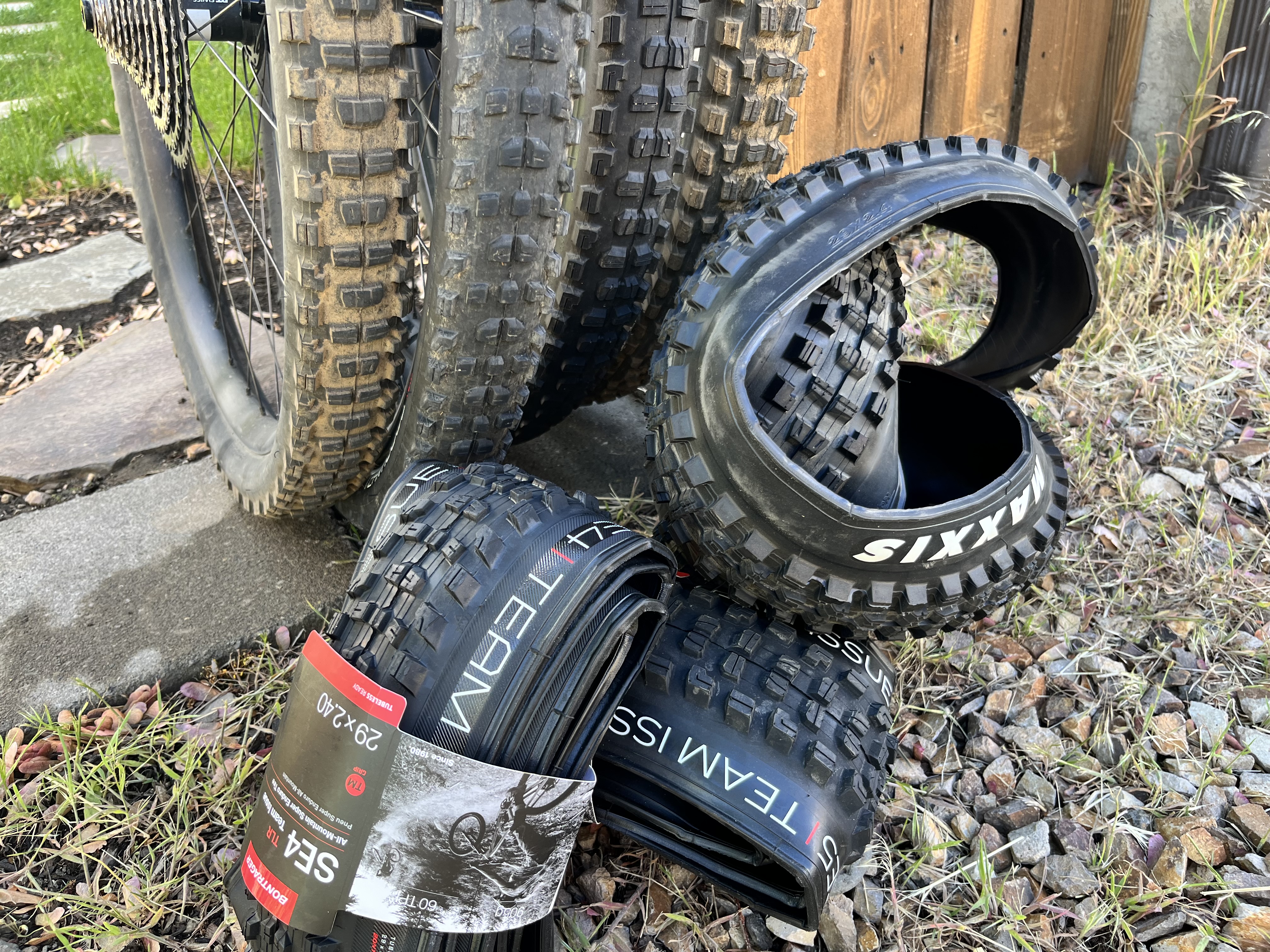
One of the most critical components of a mountain bike is the tires. Think about it—what is the only component actually coming into contact with the trail? Mountain bike tires. But they can be easily overlooked.
Contrary to popular belief, mountain bike tires are not all the same. They come in a vast array of options, each designed to enhance your riding experience in a specific way. The choices are endless, from tires tailored for different mountain bike disciplines to various sizes, brands, rubber compounds, and sidewall casings.
But they can also be confusing.
These options significantly affect how a mountain bike performs—from weekend warriors on their local trails to professional racers and freeriders performing at the highest levels. No wonder bike companies put millions of dollars into developing mountain bike tires.
But what tires should you get? And what are all the acronyms, branding, and numbers stamped on the side of the tires?
While there are many different brands of mountain bike tires, we will look at Maxxis for our example. Why? Because Maxxis is the leading mountain bike tire manufacturer and a brand you most likely have on your bike.
Plus, while Maxxis may have its way of marketing and labeling its tires, all mountain bike tires have the same few factors. Knowing what they are on a Maxxis will help you understand the labeling on your mountain bike tires if they are a different brand.
Mountain bike tire size, compound, grip, casing…oh my!

When looking at your mountain bike tires, there are likely a few things that you are familiar with or can at least figure out, as well as some that are a mystery. I imagine there are three things you will either know or be able to figure out.
- Brand—in this case, Maxxis
- Model—here, we’re looking at a Minion DHR 2
- Size—29 x 2.4 (the tire is for a 29-inch wheel and is 2.4-inches wide)
After that, it isn’t uncommon to be lost with the colorful branding on the side of mountain bike tires like Maxxis. What’s 3C? MaxxGrip, is that good? EXO-what?
These bits of information tell you a lot about the tire—things like how durable it is, how long it will last, and how it will ride. Here’s what they all mean:
- “3C” refers to the different compounds and construction Maxxis has used to create the tread on mountain bike tires. In this case, they used three different materials, each varying in firmness, to get the desired feel and response of the tires. Simply put, they combine various layers of firm, medium, and soft rubber to produce a tire with the characteristics they are looking for.
- “MaxxGrip” is an extension of the 3C compound, where Maxxis tells us how they layered the different compounds they used. As the name says, MaxxGrip will provide the ultimate amount of grip by using the softer rubber compound, but it will also roll a bit slower and won’t last as long.
- “EXO+” gives us information on the sidewall protection the tires have. Different brands of mountain bike tires will have different names—for Maxxis; they start at EXO, then EXO+, Double Down (DD), and Downhill (DH) casing for their tires. The thicker the casing, such as DD or DH, the more resistant they are to punctures. However, they will also be heavier, slower rolling, and challenging to install.
Different mountain bike tires, front and rear

On all my bikes, I have different mountain bike tires on the front and rear. The next time you go to your local bike shop, look at the mountain bikes—you’ll likely notice they also have a different tire up front than the rear.
Just to be clear, I’m not talking about mixing brands. Running two brands of mountain bike tires is undoubtedly a mountain bike fopaux and something that may get you some looks.
Same brand, but different tire models. And tire widths.
The Maxxis Minion DHR 2 I used as an example for this article is commonly paired with the Minion DHF. Do you wonder what those acronyms mean? DHF stands for “Downhill Front,” while DHR is, you guessed it, “Downhill Rear.” While it isn’t required, these mountain bike tires are meant to be paired together, front and rear.
Typically, you will find a slightly wider tire with more aggressive traction in the front and a narrower tire with just a bit less traction in the rear. Not only does having less traction in the rear help the tire roll a bit faster, but it also helps the bike be more predictable when cornering.
Mountain bike tire pressure

Underneath where it says the size of the mountain bike tires, you will likely see a label saying how much air pressure to put in the tire. In the case of the Minion DHR, Maxxis says, “50 PSI.”
In other places that aren’t so obvious, you may see an air pressure range, like “35-50 PSI.” These labels have to do with the safety and testing standards the brand must display and should not be how much air you put into your mountain bike tires.
The more air you put into a tire, the less traction you will have. If your mountain bike tires are firm, they won’t conform and adequately grip the trail. Despite the tire saying 50 PSI, cut that number in half and start there.
Run your rear tire a bit firmer than your front tire—not much, just a few PSI more. This will give your front tire more traction and allow your rear tire to break free into a skid, allowing you to compensate and regain control before a crash. For example, I usually have my front tire at 26 PSI and rear tire at 28 PSI.
The best thing to do is talk to the folks at your local bike shop. How much PSI to run in your tires will vary by trail conditions and riding style. What casing you need, or compound for your mountain bike tires will depend on the trails you ride. Your local bike shop should be able to steer you in the right direction and find the best possible tire combination for your bike.



